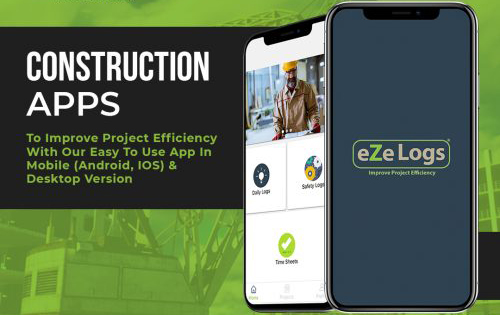Welcome to RFIs 101! If you work in the construction industry, you’ve probably heard of RFIs or Requests for Information. RFI in construction is an essential component of construction projects that enable stakeholders to communicate and clarify information, reducing errors and avoiding costly mistakes.

We’ll cover everything you need to know about RFIs, from what they are to how to create and manage them effectively. You’ll learn how RFIs can help streamline communication, reduce risk, and ensure the success of your construction project. So, let’s get started with the basics of RFIs and how they are game-changers in the construction industry.
Key Takeaways
- RFIs (Requests for Information) are a formal document used in the construction industry to clarify information and ask questions about various aspects of a project.
- RFIs seek to clarify or obtain information rather than initiate a change in the project’s scope or deliverables.
- RFIs are necessary in a variety of situations in construction projects, such as when there is a need to clarify information, request additional details, or address unforeseen issues.
- To create an RFI, identify the information needed, construct a clear question, and include pertinent drawings, specifications, or other project documents for context and clarity’s sake.
- Proper management of RFIs is essential for ensuring all stakeholders have all the necessary information to make informed decisions and avoid costly errors.
- Common mistakes to avoid include using vague or unclear language, failing to provide sufficient detail and context, not properly tracking and responding to RFIs, and failing to document the RFI process properly.
Use the software to manage the whole construction management process
What is an RFI in construction?
Now that we have an introduction to RFIs let’s dive into what they are. An RFI, or Request for Information, is a formal document used in the construction industry to clarify information and ask questions about various aspects of a project. The purpose of RFIs is to ensure that all stakeholders have the necessary information to make informed decisions and avoid costly mistakes.
RFIs differ from other construction-related documents, such as change orders or submittals, as they seek to clarify or obtain information rather than initiate a change in the project’s scope or deliverables.
Proper documentation of RFIs is critical to ensure that all parties are on the same page and that the project is delivered on time, on budget, and to the required quality standards.
In short, RFIs are a powerful tool that can streamline communication and improve collaboration between all stakeholders in a construction project.
When to Use RFIs
Request for Information (RFI) is necessary in construction projects when there is a need to clarify or obtain additional information about a project. RFIs are a way to keep all stakeholders on the same page and ensure that everyone has access to the information they need to make informed decisions.
Some examples of when to use RFIs include when there is a need to clarify project specifications, confirm design intent, request technical information, or address unforeseen site conditions. RFIs are also useful when there is a need to obtain information about project schedules, budget, or change orders.
Using RFIs can provide many benefits, such as reducing the risk of miscommunication and errors, minimizing delays and rework, and improving the quality of the final product. RFIs also facilitate collaboration and communication among all stakeholders, ensuring that everyone is aware of project requirements and changes.
In summary, RFIs are necessary in a variety of situations in construction projects, such as when there is a need to clarify information, request additional details, or address unforeseen issues. Using RFIs can provide many benefits, including reducing risk and improving communication among stakeholders, ultimately leading to a more successful project outcome.
How to Create an RFI
Now that we understand when and why to use RFIs let’s take a closer look at how to create one efficiently. To get started on creating your RFI, just follow these easy steps:
- Identify the information needed and to who the RFI will be sent.
- Construct a concise yet clear question that addresses each requirement.
- Include any pertinent drawings, specifications, or other project documents for context and clarity’s sake.
- Submit the RFI according to established communication and documentation protocols.
Key elements to include in an RFI include the project name/number, date, unique RFI number, contact information for the person or team submitting it, project title/number etc.
Best practices for crafting RFIs involve keeping them concise and specific, using straightforward language, and providing sufficient detail and context to ensure understanding. By adhering to these principles, you can guarantee your RFIs are successful, and all necessary information is obtained promptly and efficiently.
How to Manage RFIs
Now that we’ve discussed how to create an RFI let’s look at how to effectively manage them. Proper management of RFIs is essential for ensuring all stakeholders have all the necessary information to make informed decisions and avoid costly errors.
Tracking and managing RFIs requires an effective system that allows stakeholders to document, review, and respond promptly to RFIs. This could include using project management software, spreadsheets, or other tools.

Some tips for effective RFI management include assigning a unique identification number to each RFI, creating an organized communication protocol for RFIs, setting timelines for responding to RFIs, and guaranteeing all stakeholders have access to the documentation associated with each RFI.
Effectively managing RFIs allows you to guarantee that all necessary information is obtained, and your project is finished on schedule, within budget, and according to required quality standards.
Common Mistakes to Avoid
Now let’s explore some common mistakes to avoid when creating and managing RFIs.
One common mistake is using vague or unclear language in the RFI. This can cause confusion and lead to delays in receiving the necessary information. To avoid this, make sure to use specific and concise language in your RFI.
Another mistake is failing to provide sufficient detail and context in the RFI. This can lead to incorrect or incomplete information being provided, which can cause issues later on. To avoid this, make sure to include all relevant information and provide context for the RFI.
Not properly tracking and responding to RFIs is another common mistake. This can result in important information being missed or delayed, which can cause significant problems for the project. To avoid this, establish a clear process for tracking and responding to RFIs, and ensure that all stakeholders are aware of and follow the process.
Finally, failing to document the RFI process properly can also cause issues. This can lead to misunderstandings, confusion, and disputes later on. To avoid this, ensure that all RFIs are properly documented and that all stakeholders have access to the documentation.
If these mistakes are not avoided, they can impact the project’s success and create unexpected twists. For example, unclear RFIs can cause communication breakdowns and result in delays or rework. Failing to track and respond to RFIs can lead to costly mistakes or even safety hazards, creating unexpected obstacles in your journey towards successful project completion.
By avoiding these common mistakes, you can ensure that your construction adventure runs smoothly, stays on track towards your goals, and arrives at your destination safely and successfully.
The Bottom line
Finally, we have covered everything you need to understand about RFIs and their significance in construction projects. From its definition and purpose to how they should be created and managed efficiently, as well as some common errors to watch out for.
Finally, RFIs are an integral component of the construction process, serving as a conduit for communication and collaboration among stakeholders. Successfully creating and managing RFIs can reduce risks, save time and money, and guarantee project success.
RFIs are essential for project success, ensuring all parties have all the necessary information to make informed decisions and keep things moving along smoothly. Without effective RFI processes, miscommunication or mistakes may cause delays, rework, and increased costs.
Therefore, we strongly urge you to implement effective RFI processes in your construction projects. This includes creating clear and concise RFIs, setting up a system for tracking and responding to RFIs, as well as properly documenting the entire RFI process. Doing so will guarantee that your project runs efficiently and successfully until its successful conclusion.


